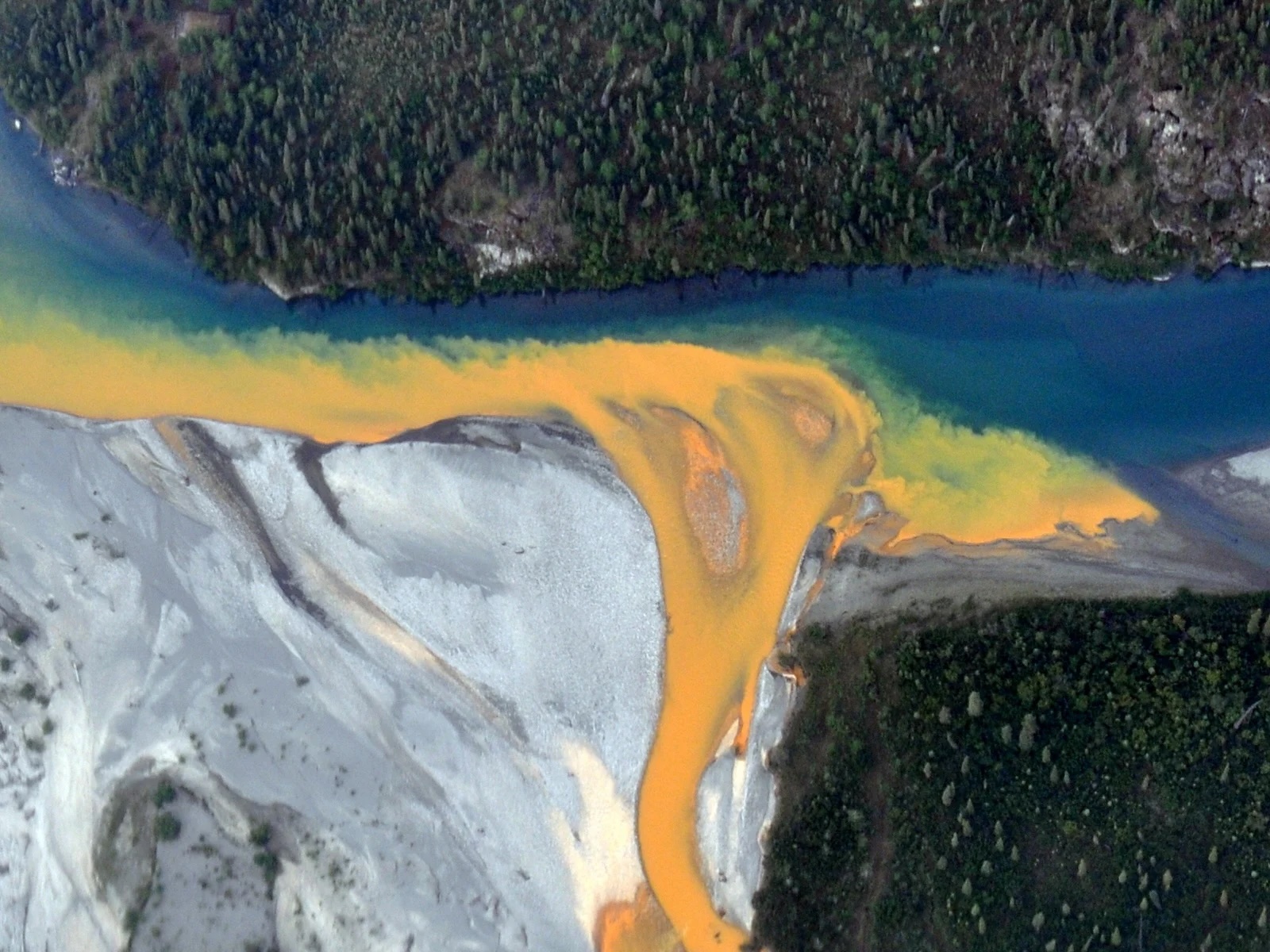Dozens of rivers and streams in the far reaches of Alaska have turned from crystal clear to a rusty color, some looking “like a milky orange juice.” According to a new study, the culprit is likely to be warming temperatures causing permafrost to thaw and leak metals into the waterways.
Needless to say, the researchers believe the rusty waters could have “considerable implications” on the local wildlife, as well as drinking water quality in rural Alaska.
Scientists at the US National Park Service, the US Geological Survey, and the University of California Davis recently ventured to northern Alaska’s Brooks Range and found at least 75 streams that had turned orange in the past 10 years.
“The more we flew around, we started noticing more and more orange rivers and streams. There are certain sites that look almost like a milky orange juice,” Jon O’Donnell, lead study author and an ecologist for the National Park Service’s Arctic Inventory and Monitoring Network, said in a statement.
“The stained rivers are so big we can see them from space. These have to be stained a lot to pick them up from space,” continued Brett Poulin, principal investigator in the research and an assistant professor of environmental toxicology at UC Davis.

Another aerial view of the orange waters at the Kutuk River in Alaska’s Gates of the Arctic National Park.
Image credit: Ken Hill / National Park Service
Samples of the tainted streams showed the chemistry of the water had undergone a radical change in the past decade. The impaired waters contained high or elevated levels of iron, zinc, nickel, copper, and cadmium.
Some of the water in the Agashashok River basin was also incredibly acidic, with a pH of just 2.6 – that’s not far from the acidity of lemon juice or white vinegar. Downstream from the highly acidic stream, the researchers noted the vegetation was “blackened and dead.”
Iron is the prime reason these rivers appear a funky color. While iron itself is typically a metallic gray color, it often appears orange due to the formation of iron oxides. When iron is exposed to oxygen and moisture, it undergoes a chemical reaction that produces rust, scientifically known as iron(III) oxide, which has a reddish-orangey coloration.
The preliminary data from the study suggests that metal mobilization in Alaska’s rivers could heighten the risk of population decline in key subsistence fish species, including Dolly Varden, chum salmon (Oncorhynchus keta), and whitefish (Coregonus).
The problem is becoming more noticeable in northern Alaska, but the researchers warn that climate change is set to ensure it becomes increasingly common in other parts of the world where permafrost exists.
“There’s a lot of implications,” O’Donnell said. “As the climate continues to warm, we would expect permafrost to continue to thaw and so wherever there are these types of minerals, there’s potential for streams to be turning orange and becoming degraded in terms of water quality.”
The study was published in the Nature journal Communications: Earth & Environment.
Source Link: Alaska's Rusting Rivers Are Turning Orange And As Acidic As Vinegar